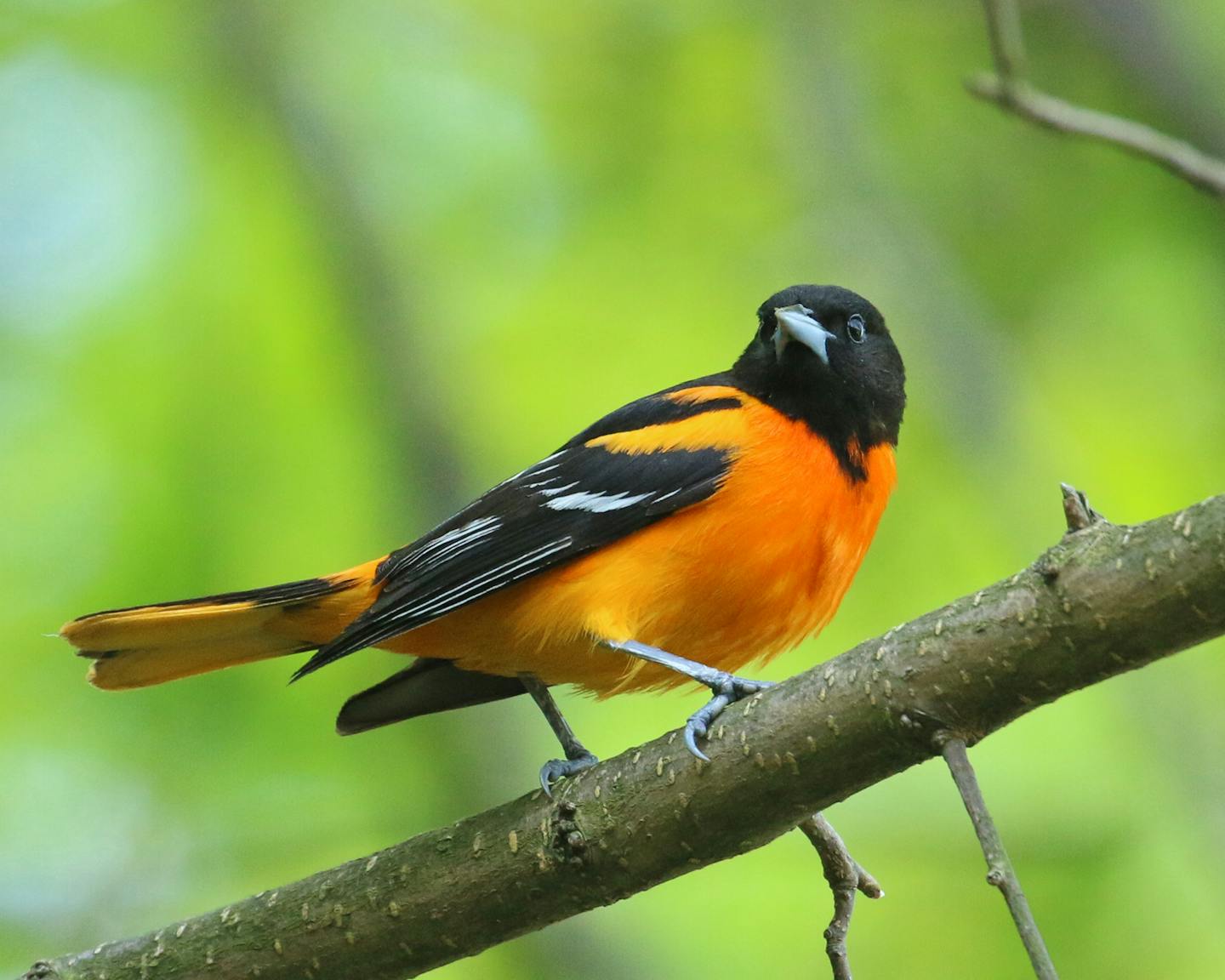Baltimore orioles are one of springtime's biggest gifts: These large (as songbirds go), handsome birds migrate back from the tropics beginning in early May, filling the skies with their sweet whistles and songs.
They're looking to find a mate, establish a nest and raise a new batch of orioles. These orange and black birds are famous for the unique purse nests they fashion at the tip of a high branch, often in a cottonwood tree. Most of the nest building is done by the female, who uses plant fibers to weave a tough and resilient pouch. And she weaves much like a human would crochet, poking and pulling plant material to create the pouch.
Oriole nests might be said to be overbuilt, since they last much longer than one nesting season — in one study, 85% of oriole nests were still in place up to a year later. Orioles don't reuse a nest for next year's brood, but might pull out and recycle some of the fibers. The placement of the nest, out at the end of a twig, foils most predators looking for a meal of eggs or young birds (think red and gray squirrels). And the depth of the pouch keeps most flying predators, such as crows, at bay.
We're all familiar with the bright orange color of the typical male oriole, but a reader recently sent in some astounding photos, taken this spring in Pennsylvania, showing a very different oriole: He's got the right shape and markings, but his body feathers are a brilliant red. This startling oriole is rare, but as it turns out, not one-of-a-kind. And his color is probably due to something he ate.
The photographer, Phyllis Terchanik, who lives in Pennsylvania, was stunned to see the gorgeous red bird. "When he flew by, I kept thinking 'scarlet tanager,' " she wrote [tanagers are a vivid red].
There's a word for this kind of abnormal redness — erythrism. A paper published by the National Aviary in Pittsburgh notes that orioles with unusually red plumage began to be reported in 1993 in Rhode Island and New York state. By 2013 researchers had found that the color change was likely due to a pigment found in the berries of nonnative Asian bush honeysuckles. Although originally promoted in the East and Midwest as "valuable wildlife habitat" by nurseries in the 1960s, these shrubs proliferated and are now regarded as highly invasive species in many states. In Minnesota it's now illegal to sell or import them.
The paper's authors, researchers Jocelyn Hudon and Robert Mulvihill, concluded that naturally yellow or orange birds that eat the honeysuckle berries ahead of their late-summer molt will likely develop unusually red plumage. Other birds affected include cedar waxwings (orange tail tips instead of yellow), white-throated sparrows with orange facial spots, yellow-breasted chats, various warblers and Northern flickers. It's possible that red-dyed birds will lose their abnormal red tones after their springtime molt. And they might not develop it again the following year if they don't feed on non-native honeysuckle berries in the fall.
The unusual coloration doesn't harm the birds, but it may disrupt a breeding signal: Female birds use the brightness of a male's feather coat as an indicator of his body condition and underlying genetic make-up, thus his fitness as a potential parent. Unearned bright color could make a less-than-healthy bird appear to be a good candidate as a mate.
Keep your eyes peeled this summer, and who knows? You might be rewarded by the sight of an unusually red oriole or an uncommonly orange common yellowthroat warbler.
St. Paul resident Val Cunningham, who volunteers with the St. Paul Audubon Society and writes about nature for a number of newspapers and magazines, can be reached at valwrites@comcast.net
Oriole melodies
To hear the oriole's rich calls and songs, visit the Cornell Lab of Ornithology's All About Birds site, enter the species' name, then click on the "Listen" bar or the "Sounds" button.
Do orioles mate for life?
Baltimore orioles tend to return to the same territory each spring and often pair up with last year's mate — if they can find him or her. Like most birds, their annual mortality rate is high, with only 50% surviving each year. With only a 25% chance that both will make it back in the spring, "mate for life" usually means a single breeding season.








